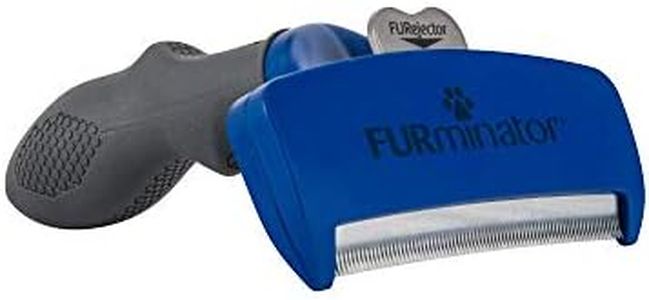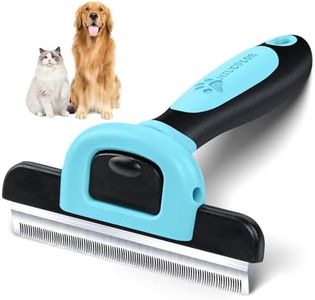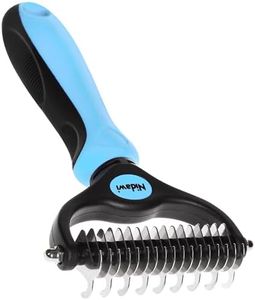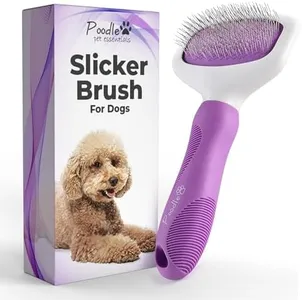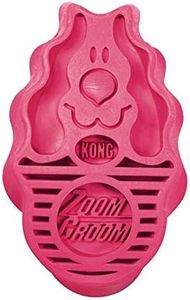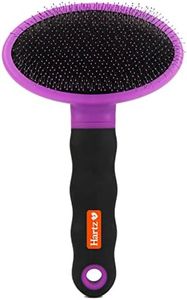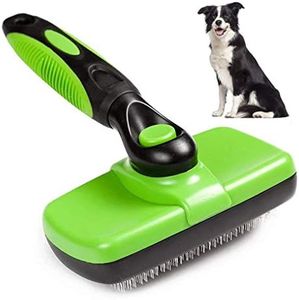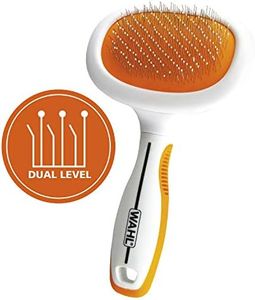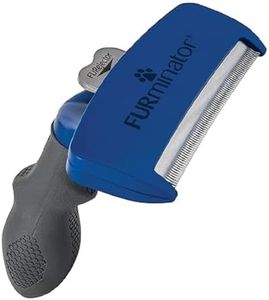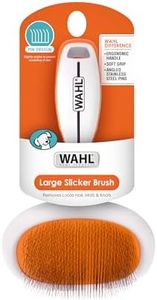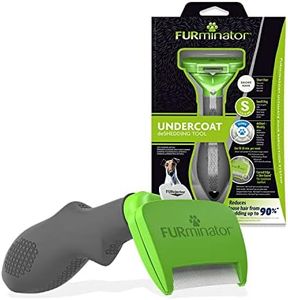We Use CookiesWe use cookies to enhance the security, performance,
functionality and for analytical and promotional activities. By continuing to browse this site you
are agreeing to our privacy policy
10 Best Dog Brushes
From leading brands and best sellers available on the web.Buying Guide for the Best Dog Brushes
Choosing the right dog brush can make a big difference in your pet's grooming experience and hair health. The right brush helps remove loose fur, keeps the coat clean, and can even strengthen your bond with your dog during grooming sessions. To buy the best fit, it's important to consider your dog's coat type, size, sensitivity, and grooming needs. Let's go through the key factors to help you make the choice that's best suited for your furry friend.Brush TypeBrush type refers to the design of the brush, such as slicker, bristle, pin, or undercoat rake. Each type is intended for a specific coat texture and grooming need. Slicker brushes have fine, short wires close together and are good for removing mats in medium to long-haired dogs. Bristle brushes work well on short, smooth coats for removing debris and distributing oils. Pin brushes, which resemble human hair bristle brushes with rounded pins, are better for longer coats and sensitive dogs. Undercoat rakes are meant for heavy shedders with double coats to remove loose undercoat hair. To pick the right one, think about your dog's hair length, how often they shed, and if they are prone to tangles or mats.
Bristle or Pin QualityThe quality and material of the bristles or pins affect how comfortable the brush is for your dog and how effective it is at grooming. Softer bristles are gentler and better for sensitive skin or shorthaired dogs, while firmer bristles or pins can better penetrate thick or tangled fur. If your dog has sensitive skin, opt for rounded or coated tips. For thicker coats, choose stronger bristles or pins that won’t bend easily. Picking the right quality ensures you get a brush that won’t scratch your dog or break easily.
Brush SizeBrush size refers to how large the head of the brush is compared to your pet. Large brushes cover more surface area and are convenient for bigger dogs, but may not reach small areas. Smaller brushes or ones with a narrow head are easier to maneuver, especially for small dogs or when brushing hard-to-reach spots like behind ears or legs. Choose a brush size that matches your dog’s body size and ensures you can groom thoroughly without missing spots or causing discomfort.
Handle Design and ComfortHandle design influences how easy and comfortable it is to hold and use the brush, especially during longer grooming sessions. Ergonomic or anti-slip handles help you grip the brush securely and reduce hand fatigue. If you have a large dog or plan on frequent grooming, a comfortable handle becomes more important. Pick a brush that fits well in your hand and feels comfortable, as it makes the whole process more pleasant for both you and your pet.
Ease of CleaningSome brushes are easier to clean than others—features like self-cleaning buttons or removable pads help you quickly remove accumulated hair and maintain hygiene. If you brush your dog regularly or they shed a lot, a brush that’s easy to clean will save you time and effort. Look for brushes that specify easy cleaning features if this convenience matters to you.


